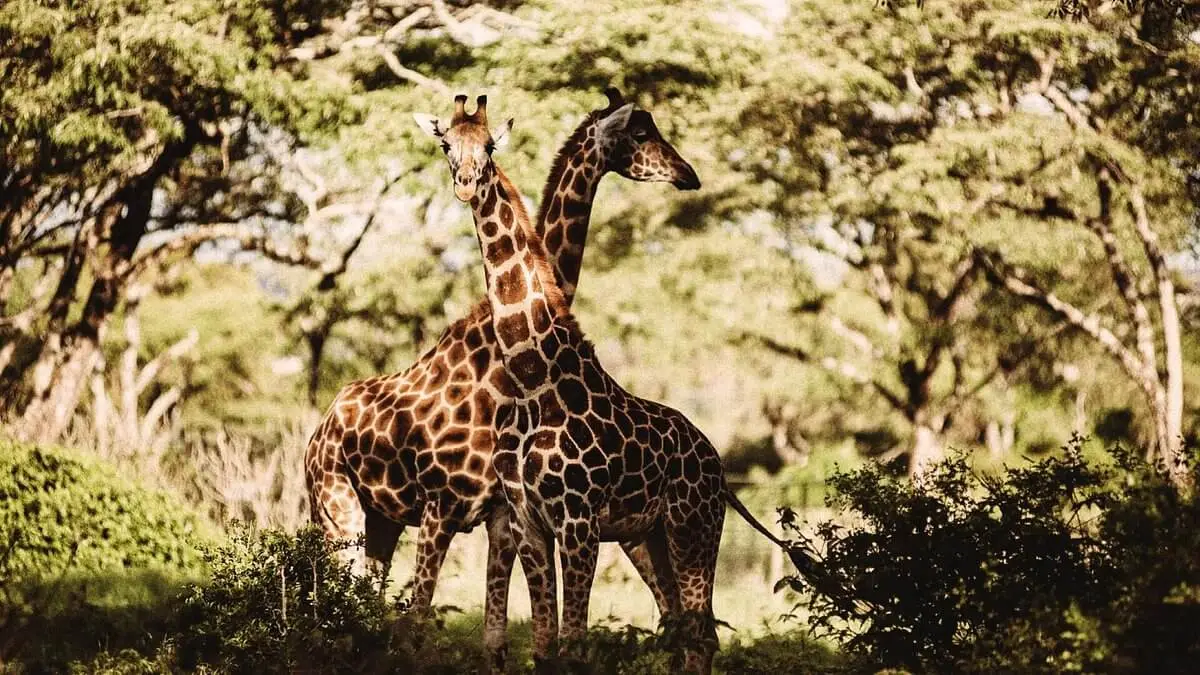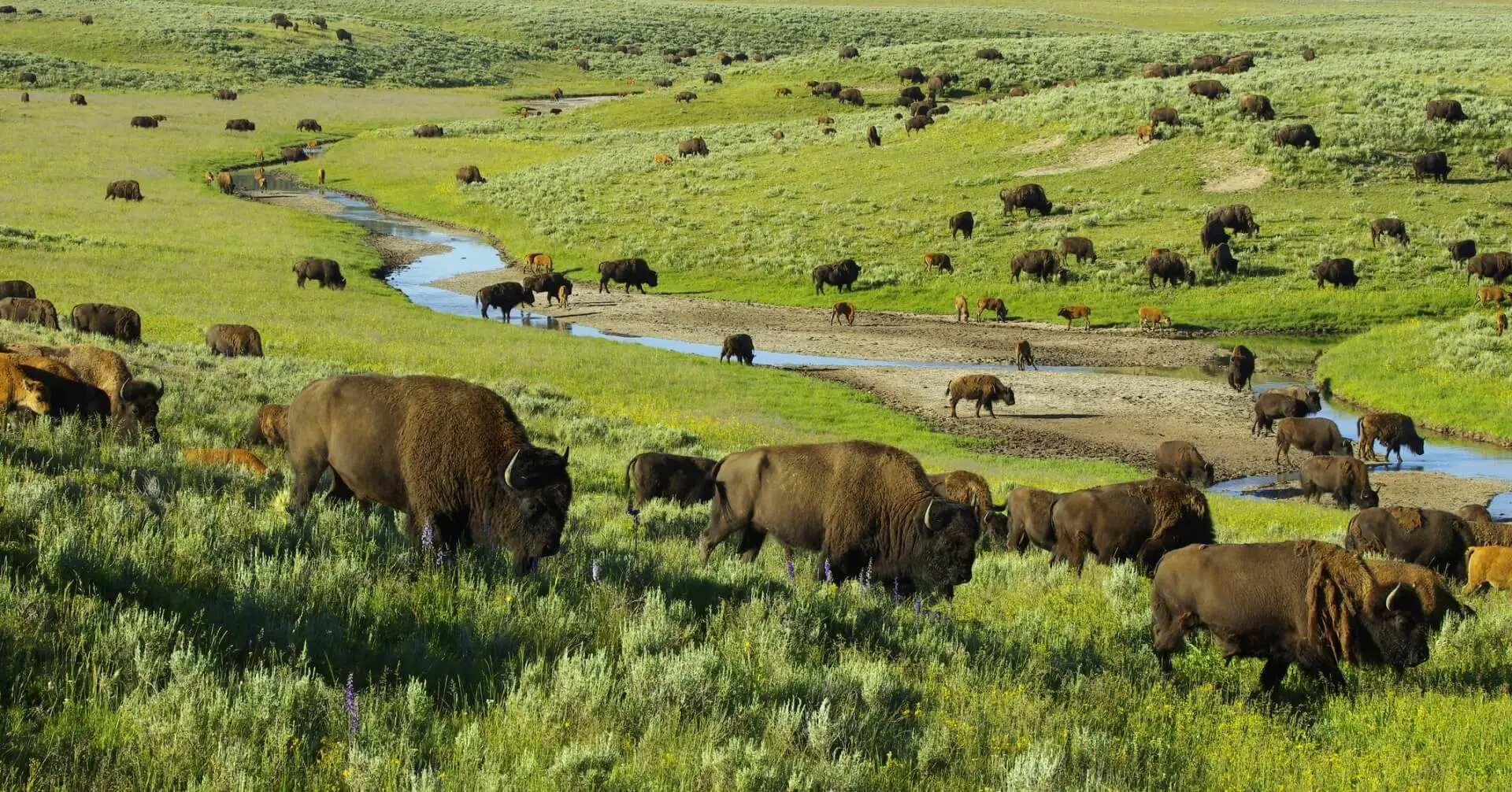In the enchanting realm of wildlife encounters, there’s nothing quite like the thrill of spotting majestic creatures in their natural habitats. As I ventured into the wild, I found myself immersed in breathtaking landscapes and extraordinary encounters with animals that seemed straight out of a storybook. Picture standing in awe as a graceful tiger prowls through the dense Indian forest or witnessing the awe-inspiring sight of a humpback whale breaching in the vast ocean. These encounters provide a profound connection to nature’s wonders and leave indelible memories that last a lifetime.
Content

Wildlife Encounter Destinations
When it comes to wildlife encounters, there are numerous destinations around the world that offer breathtaking opportunities to observe majestic creatures in their natural habitats. These destinations not only provide a chance to witness incredible wildlife up close but also contribute to conservation efforts.I will take you on a virtual journey to some of the most captivating wildlife encounter destinations, where you can immerse yourself in the wonders of nature.
Also Read: The best adventure spots in the world
1.Serengeti National Park, Tanzania Located in Tanzania
Serengeti National Park is a haven for wildlife enthusiasts. As I ventured into the vast plains of Serengeti, I was greeted by a spectacular sight of wildebeests, zebras, and gazelles grazing peacefully. The annual Great Migration, where millions of animals traverse the Serengeti in search of fresh grazing lands, is a sight that will leave you awe-inspired. I witnessed this incredible natural phenomenon firsthand, as the ground trembled beneath my feet, surrounded by the thundering hooves of wildebeests.
2.Maasai Mara National Reserve
Kenya Adjacent to the Serengeti lies the Maasai Mara National Reserve in Kenya, another remarkable wildlife encounter destination. Here, I had the privilege of observing the iconic African lions in their majestic glory. The vast grasslands of Maasai Mara serve as their kingdom, where they roam freely and showcase their hunting prowess. It was an exhilarating experience to witness a lioness stealthily stalking her prey, a true testament to the raw power and grace of these magnificent creatures.
3.Ranthambore National Park
India Nestled in the heart of India, Ranthambore National Park is renowned for its thriving population of royal Bengal tigers. As I embarked on a safari through the lush forests of Ranthambore, I felt a rush of anticipation. Suddenly, a magnificent tiger emerged from the dense foliage, effortlessly camouflaged amidst the vibrant colors of nature. Its piercing gaze held a sense of untamed wilderness, and I couldn’t help but marvel at the sheer beauty and resilience of these endangered creatures.
4.Borneo Rainforest
Malaysia For an extraordinary wildlife encounter in Asia, the Borneo Rainforest in Malaysia is an unparalleled destination. It is home to the elusive orangutans, with their distinctive red fur and gentle demeanor. As I trekked through the dense jungle, I caught a glimpse of an orangutan swinging gracefully from tree to tree. Witnessing these incredible primates in their natural habitat was a humbling experience, emphasizing the importance of preserving their fragile ecosystem.

Popular Wildlife Species and Their Habitats
In the world of wildlife encounters, certain species stand out for their extraordinary beauty and the habitats they call home. From the regal big cats to the enchanting marine life and captivating primates, these popular wildlife species and their habitats offer a glimpse into the wonders of nature. Join me on a captivating journey as we explore these magnificent creatures and the environments they thrive in.
1.Big Cats
few creatures captivate the imagination quite like the big cats. These majestic predators exude power and grace, commanding respect wherever they roam. Lions, known as the kings of the African savannah, reign over their territories with a commanding presence. I vividly remember the awe-inspiring sight of a lioness leading her pride through the golden grasslands, her regal mane flowing in the wind.
2.Tigers in Indian Forests
The tiger with its striking stripes and elusive nature, holds a special place in our hearts. In the lush forests of India, I embarked on an adventure to spot these magnificent creatures. Patiently waiting in a tiger reserve, I caught a glimpse of a royal Bengal tiger emerging from the dense foliage. Its golden coat shimmered in the dappled sunlight as it padded gracefully through its territory, a true symbol of power and beauty.
3.Marine Life
Whales in the Oceans Diving into the depths of the world’s oceans reveals a whole new realm of wildlife wonders. Majestic whales, the gentle giants of the sea, captivate us with their immense size and graceful movements. During a boat excursion, I was lucky enough to witness a humpback whale breaching, leaping out of the water and crashing back with a mighty splash. The sheer awe and wonder of being in the presence of these magnificent creatures are beyond words.
4.Sea Turtles on Tropical Beaches
On serene tropical beaches, another marvel of marine life unfolds—the sea turtles. I had the privilege of witnessing a remarkable event as baby sea turtles hatched and made their way to the ocean. The tiny creatures, guided by their instinct, embarked on a perilous journey, overcoming obstacles to reach the safety of the vast sea. It was a heartwarming experience, reminding me of the resilience and vulnerability of these ancient creatures.
5.Primates
Gorillas in African Rainforests Among the primates, gorillas hold a special place in our fascination. Trekking through the dense African rainforests, I embarked on an unforgettable encounter with a family of gorillas. As I cautiously approached, a massive silverback gorilla met my gaze. It was a humbling moment, feeling the connection between our shared ancestry and recognizing the need to protect these incredible creatures and their disappearing habitats.
6.Orangutans in Southeast Asian Jungles
The lush jungles of Southeast Asia are home to another enchanting primate—the orangutan. High up in the treetops, I observed these gentle creatures swinging effortlessly from branch to branch. Their expressive faces and intelligent eyes seemed to reflect the wisdom of their ancient lineage. Witnessing their playful interactions and seeing their natural habitat was a poignant reminder of the delicate balance we must maintain to ensure their survival.
Safety Tips for Wildlife Encounters
When venturing into the realm of wildlife encounters, it’s crucial to prioritize safety to ensure a positive experience for both humans and animals. By following essential safety tips, you can enjoy the wonders of wildlife encounters while respecting the natural habitats and minimizing any potential risks. Join me as I share valuable insights and personal experiences to help you make the most of your wildlife adventures while staying safe.

1.Understanding Park Rules and Regulations
Before embarking on a wildlife encounter, it’s vital to familiarize yourself with the rules and regulations of the specific park or reserve you’re visiting. Each location may have unique guidelines to protect both visitors and the wildlife they seek. During my visit to a national park, I discovered the importance of staying on designated trails and respecting restricted areas. Adhering to these regulations not only ensures personal safety but also helps preserve the natural balance of the ecosystem.
2.Adhering to Local Wildlife Protection Laws
Responsible wildlife encounters go beyond park rules and extend to local wildlife protection laws. These laws are in place to safeguard endangered species and their habitats. During a trip to an exotic location, I learned about the significance of respecting wildlife from a distance and refraining from any actions that may disrupt their natural behaviors. By obeying these laws, we contribute to the preservation of fragile ecosystems and help maintain the integrity of these unique habitats.
3.Maintaining a Safe Distance
While it’s thrilling to observe wildlife up close, maintaining a safe distance is crucial for both your safety and the well-being of the animals. Getting too close can cause stress or aggression, putting both parties at risk. During a wildlife encounter, I was amazed by the beauty of a herd of elephants. However, I knew it was vital to maintain a respectful distance to avoid any potential danger. By using binoculars or zoom lenses, you can enjoy detailed views without intruding on the animals’ personal space.
4.Being Aware of Potential Risks and Dangers
In any wildlife encounter, it’s essential to be aware of potential risks and dangers. Animals are unpredictable, and certain species may pose inherent risks. While exploring a tropical rainforest, I encountered venomous snakes and learned to watch my step and stay alert. Educating yourself about the wildlife in the area and their behaviors can help you anticipate and respond appropriately to potential dangers, ensuring a safe and enjoyable experience.
5.Preparing for Emergencies and Wildlife Encounters
Gone Wrong Despite our best efforts, unexpected situations can arise during wildlife encounters. It’s crucial to be prepared for emergencies and know how to respond effectively. During a hiking trip in bear country, I carried bear spray and knew how to use it responsibly. Understanding basic first aid, having communication devices, and informing someone about your itinerary can be life-saving precautions. By preparing for the worst-case scenario, you can minimize potential risks and handle unforeseen events with confidence.
Safety should always be a top priority when engaging in wildlife encounters. By understanding park rules and local wildlife protection laws, maintaining a safe distance, being aware of potential risks, and preparing for emergencies, you can embark on unforgettable wildlife adventures while minimizing any negative impact on the environment. Remember, responsible and safe encounters not only protect you but also contribute to the conservation of these majestic creatures and their habitats.
Conclusion
In the vast tapestry of our natural world, wildlife encounters offer a gateway to awe-inspiring moments and deep connections with the wonders of nature. As I reflect on my personal experiences of spotting majestic creatures in their natural habitats, I am filled with a sense of gratitude and reverence. These encounters have not only allowed me to witness the grace and beauty of creatures like lions, tigers, and whales, but they have also ignited a passion within me to protect and preserve their habitats for generations to come. The memories forged during these encounters serve as a reminder of the incredible diversity of life on our planet and the responsibility we bear to be guardians of the natural world.
FAQs
u003cstrongu003eCan I use my drone to capture wildlife encounters?u003c/strongu003e
It is important to note that using drones to capture wildlife encounters can disturb and disrupt the animals in their natural habitats. In many wildlife reserves and national parks, drone usage is strictly prohibited to ensure the well-being and safety of the animals. Respect the rules and regulations of the specific location you are visiting and opt for other photography methods that prioritize the welfare of the wildlife.
u003cstrongu003eHow close can I get to the wildlife during an encounter?u003c/strongu003e
Maintaining a safe distance from wildlife is crucial for both your safety and the well-being of the animals. It is recommended to observe wildlife from a distance of at least 100 feet or as specified by park regulations. Remember that getting too close can cause stress, alter natural behaviors, and even lead to dangerous situations. Always prioritize the comfort and safety of the animals by giving them the space they need.
u003cstrongu003eWhat should I do if I encounter a dangerous or aggressive animal?u003c/strongu003e
If you encounter a dangerous or aggressive animal during a wildlife encounter, it is important to remain calm and avoid any sudden movements. Back away slowly without turning your back on the animal. Maintain eye contact if possible, but never make direct eye contact with a predator. If you feel threatened, create a barrier between yourself and the animal, such as using your backpack or a tree. In such situations, it is always best to follow the specific guidelines provided by park rangers or local authorities.
u003cstrongu003eCan I feed the wildlife during an encounter?u003c/strongu003e
Feeding wildlife is strongly discouraged and, in many cases, illegal. Human food can be harmful to animals and disrupt their natural feeding patterns. It can also habituate them to human presence, leading to dependency and potentially dangerous situations. Enjoy the wildlife encounters from a respectful distance and refrain from offering any food. Remember that maintaining the animals’ natural behaviors and protecting their well-being should be our top priority.
u003cstrongu003eWhat precautions should I take to protect myself from wildlife-related diseases?u003c/strongu003e
When encountering wildlife, it is essential to take precautions to protect yourself from wildlife-related diseases. Avoid direct contact with animals and their bodily fluids. Use hand sanitizers or wash your hands thoroughly after being in wildlife-rich areas. Stay up to date on necessary vaccinations, such as those for tetanus and rabies, and consult a healthcare professional or travel clinic for specific recommendations based on your destination. By following these precautions, you can enjoy wildlife encounters while minimizing the risk of contracting any diseases.

My name is Russell Noyola. I am a travel blogger from the United States who loves to explore and write about my adventures! I have been fortunate enough to travel all over the world, and have seen so much of this beautiful planet that we live on. From hiking through a rainforest in Costa Rica or exploring a new city during one of my many trips abroad, there’s nothing quite like seeing new places for the first time. I love writing about what it’s like to be a woman traveling alone, as well as sharing stories from other female travelers around the world.









